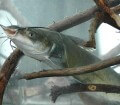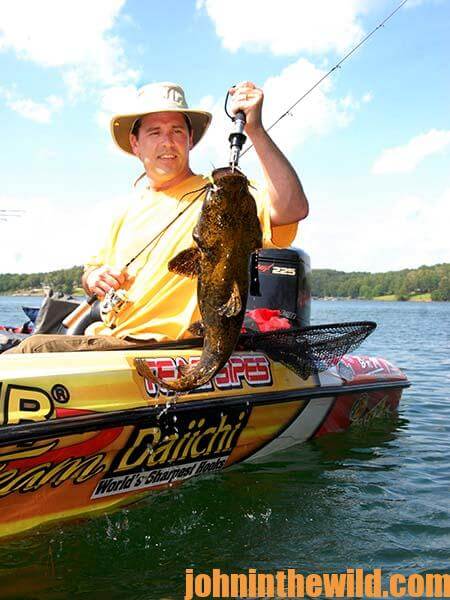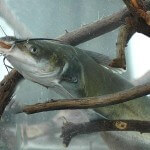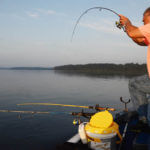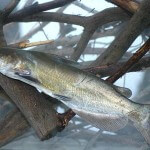John’s Note: Even when the singer’s the same and the music’s the same, most songs mean something different to every listener. However, there’s one song that evokes the same emotion in all of us, and that’s the song sung by a drag as line hums off the spool, the rod bows, and our muscles tighten. A fighting fish captures much of the essence of angling: the anticipation of what may be at the end of the line; the agony of whether or not the angler can subdue the critter before it escapes; the ecstasy of seeing that dark shadow just under the surface of the water at the end of the line; the sheer joy of excitement as the net is slipped under the fish; and the anticipation of the delicious meal that the fish will provide – especially if it’s a catfish. The taste of Mr. Whiskers has so enraptured the taste buds of anglers that in many states, raising and selling catfish has become a business more important than selling cotton, soybeans, corn and peanuts. However, there are still tons of catfish swimming rivers, lakes and streams throughout the nation, and these fish are free to the anglers who know how to take them. But, because competition for the cats is increasing, the angler who consistently wants to catch a mess of fish home for supper must develop better tactics for finding and taking them.
One angler who has succeeded in doing this is Jim Perry, once a bass and crappie guide out of Buchanan’s Resort on Kentucky Lake near Paris, Tennessee.
For Perry, catching 50 pounds of catfish on a hot summer day is simply average. Perry doesn’t start his fishing for cats until after the spawn, when the cats have left the shallow-water rocks and have moved back to the deep river and creek channels. And, he utilizes many of the tactics that he has learned from bass fishing to catch catfish. “I usually don’t start fishing for cats each day until the power company starts pulling water through the lake to produce electricity at the hydroelectric plant at the end of the lake,” Perry explains. “Most bass fishermen understand that bass become active and go on feeding sprees when current is being pulled through a lake. However, what many anglers don’t realize is that when the current starts to move, not only bass but just about all of the fish in the lake start feeding.
“The movement of the current not only brings oxygen into the lake, but it stirs up microorganisms and plant life for the bait fish to eat. As the bait fish become more active, so do the prey fish such as bass, crappie and catfish. The current’s effects are seen most-dramatically along the old river channels and at the mouths of major creek channels that once have fed into those river channels. This is where the flow of the water usually is the strongest, where there is the most dissolved oxygen in the water, and where the water is the coolest. I use my depth finder to find concentrations of baitfish on the edges of the old river channels. On top of an old river bank, the bottom may be at 15 feet before it drops to 55 feet. Some of the best places to fish along that sunken riverbank are where small creeks or streams once ran into the main river.
“Along with your depth finder, use a topo map or a river map that shows the original creeks and rivers that existed before the area was inundated, and you can locate these spots. At the mouths of these small, underwater creek channels, the catfish usually will concentrate and wait to attack baitfish or other bait such as worms. Usually a point or a bar will be at the creek-channel mouth. Sometimes the catfish will be on top of the bar, and other times they’ll be off to the side. But you can locate the cats on your depth finder.” During the Dog Days of summer, Perry will take most of his catfish in 25 to 45 feet of water, with many of the cats caught in about 35 feet of water.
“Click here to get these books.”
About the Author
John Phillips, winner of the 2012 Homer Circle Fishing Award for outstanding fishing writer by the American Sportfishing Association (AMA) and the Professional Outdoor Media Association (POMA), the 2008 Crossbow Communicator of the year and the 2007 Legendary Communicator chosen for induction into the National Fresh Water Hall of Fame, is a freelance writer (over 6,000 magazine articles for about 100 magazines and several thousand newspaper columns published), magazine editor, photographer for print media as well as industry catalogues (over 25,000 photos published), lecturer, outdoor consultant, marketing consultant, book author and daily internet content provider with an overview of the outdoors. Click here for more information and a list of all the books available from John E. Phillips.

